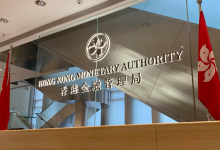Brazil Launches Sweeping Crypto Rules to Rein in Digital Asset Sector


Brazil has introduced a comprehensive set of cryptocurrency regulations designed to bring the country’s digital asset market under formal oversight. Announced by the Central Bank of Brazil on November 10, 2025, the framework implements key provisions of the 2022 Virtual Assets Law and establishes clear licensing, governance, and capital requirements for virtual asset service providers operating in the country. The move aims to secureguard consumers, improve market integrity, and align crypto activity with Brazil’s broader financial policy framework.
Licensing and capital requirements for VASPs
Under the new rules, platforms, custodians, brokers, and wallet operators must obtain authorization from the Central Bank of Brazil before offering services. Firms will have to demonstrate robust governance, cybersecurity controls, segregation of client assets, and adherence to anti-money laundering and counter-terrorism financing obligations. The framework also introduces minimum capital thresholds that scale by business model and activity type, which industry observers expect to range up to several million U.S. dollars. Supporters say these standards will professionalize market operations and reduce risks associated with outages, mismanagement, and inadequate consumer protections.
A defining feature of the package is the reclassification of many crypto-fiat transactions as foreign platform operations. Stablecoin payments, conversions between fiat and crypto, and cross-border transfers will now be captured under Brazil’s existing FX regime, bringing these flows into established reporting and compliance channels. Regulators argue the change will close gaps that previously allowed unmonitored capital movement and regulatory arbitrage, while giving policymakers better visibility into the macroeconomic footprint of digital assets. Market participants note that compliance with FX rules may raise operational costs but could also improve trust among institutional users and traditional financial partners.
Transition timeline and compliance outlook
The rules take effect in February 2026, providing a transition window for firms to align systems, submit authorization requests, and adjust product offerings where necessary. During this period, the central bank is expected to publish procedural guidance on licensing steps, audit expectations, and transaction reporting. Companies that cannot meet the capital, governance, or risk standards may face restrictions or industry consolidation as stronger players acquire smaller competitors. Meanwhile, larger providers anticipate clearer pathways to launch regulated services and expand partnerships with banks and payment institutions.
Brazil’s framework places the country among the most advanced jurisdictions in Latin America for digital asset oversight, complementing innovations such as the Pix instant payments network and the Drex central bank digital currency initiative. By integrating stablecoins and crypto intermediaries into existing financial rules rather than treating them as a separate silo, Brazil signals a strategy focused on responsible innovation. For consumers and institutions, the outcome could be a more transparent, secure market where digital asset services operate to standards closer to those of traditional finance, while preserving the efficiency and programmability that make crypto attractive in the first place.







